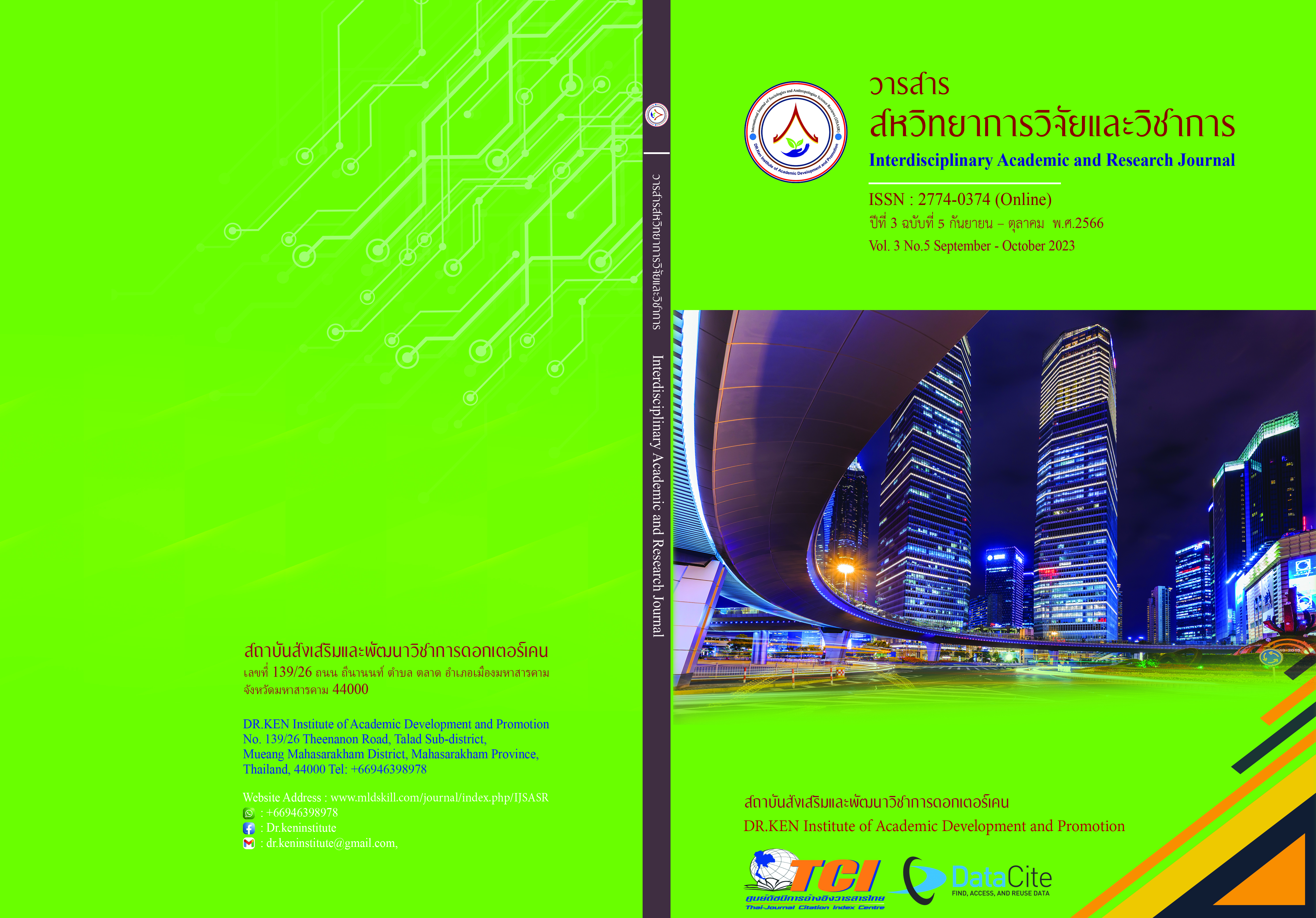Development of Basic Khmer Characters Reading and Writing Training Curriculum for Monks
DOI:
https://doi.org/10.14456/iarj.2023.289Keywords:
Development of Training Curriculum; , Reading and Writing; Basic , Khmer CharactersAbstract
The study of Pali in Thailand since ancient times must begin with learning the Khmer script. Because the Pali language is inscribed in the Khmer script beginners must learn the Munkajjai scriptures to recite the formulas, which have both the Bihar and the Thai subtitles, all in the Khmer script. Therefore, the purposes of this research were 1) to study the basics information, problem conditions, and the force of the training, 2) to develop the training curriculum, 3) to Implement the training curriculum, and 4) to study the effectiveness of the training curriculum. The research was divided into 4 phases. Phase 1: a study of basic information, problem conditions, and the need for the training. Phase 2: to develop the curriculum m. Phase 3: to implement the training. The last phase is to evaluate its effectiveness. The sample group in Phase 1 is 368 monks. Additionally, the informants in the focus group were 10 experts which are obtained by purposive Sampling. The target group in Phase 2 is 7 expert key informants which are used in the seminar based on connoisseurship. The sample group in Phase 3 is 30 monks as participants in the training course. The tools for data collection are questionnaires, interview forms, conformity assessment forms, and appropriateness evaluation forms. Statistics for data analysis are percentage, mean, standard deviation, and One-Samples t-test. The research found that (1) According to the study of the basics information, problem conditions, and the need for training, shows that the number of training needs is at the highest level. In addition, referring to the group discussion between the monks, there is a consensus that the training course of Khmer Character reading and writing for monks should be developed to preserve and convey the language culture. (2) The development of the training curriculum consists of 6 parts: 1) principle of the curriculum 2) objectives of the curriculum 3) Content 4) Training activities 5) Media and learning resources 6) evaluation and assessment. The result of the curriculum illustrates that the curriculum is commodified at the highest level and is suitable at a high level which is a higher level. (3) The result of the training course indicated that the mean score of knowledge of after the training is 27.23 out of 30. Compared to the 80 percent criterion, after the training of the basic Khmer Characters reading and writing for monks hold of the trainees higher than 80 percent, statistically significant at the .01 level. The satisfaction of the monks with the training activities is at a high level. (4) The result of the training curriculum’s effectiveness Confirmation by all 7 experts. There was a consensus that the course was appropriate at a high level.
References
กังวล คัชชิมา. (2541). พัฒนาการของอักษรและอักขรวิธีที่พบในประเทศไทยตั้งแต่ พุทธศัตวรรษที่ 11-18. รายงานประกอบรายวิชา 318 – 406 Palaeography in Southeast Asia ภาควิชาภาคตะวันออก คณะโบราณคดี มหาวิทยาลัยศิลปากร
บัญญัติ สาลี. (มปป.). ประวัติภาษาขอม. มหาสารคาม : โครงการอนุรักษ์ใบลานในภาคตะวันออกเฉียงเหนือ มหาวิทยาลัยมหาสารคาม. ไม่ปรากฏปีที่พิมพ์
บุญชม ศรีสะอาด. (2553). การวิจัยเบื้องต้น. พิมพ์ครั้งที่7. กรุงเทพฯ : สุวีริยาสาส์น.
พระพรศักดิ์ิ ธิตเมโธ (ปรีชา). (2562). การศึกษาอักษรขอมที่ใช้ในพระพุทธศาสนาเถรวาทในประเทศไทย. วิทยานิพนธ์ศาสนศาสตรมหาบัณฑิต สาขาวิชาพุทธศาสนาและปรัชญา มหาวิทยาลัยมหามกุฏราชวิทยาลัย.
พัฒนา สุขประเสริฐ. (2543). กลยุทธ์ในการฝึกอบรม. พิมพ์ครั้งที่ 3. กรุงเทพฯ : มหาวิทยาลัยเกษตรศาสตร์
มธุรส ประภาจันทร์. (2559). การพัฒนาหลักสูตรฝึกอบรมเสริมสร้างความสามารถในการสอนอ่านและวินิจฉัยการอ่านสำหรับครูระดับประถมศึกษาตอนต้น. ปริญญานิพนธ์การศึกษาดุษฎีบัณฑิต สาขาวิชาการวิจัยและพัฒนาหลักสูตร, มหาวิทยาลัยศรีนครินทรวิโรฒ.
วิชัย วงษ์ใหญ่. (2554). การพัฒนาหลักสูตรครบวงจร. กรุงเทพฯ: โรงพิมพ์แห่งจุฬาลงกรณ์มหาวิทยาลัย.
สงัด อัทรานันท์. (2532) พื้นฐานและหลักการพัฒนาหลักสูตร. พิมพ์ครั้งที่ 3. กรุงเทพฯ: มิตรสยาม
อนวัช สิญจวัตร. (2565). การพัฒนาหลักสูตรฝึกอบรมการอ่านการเขียนอักษรธรรมเบื้องตันสำหรับพระสงฆ์. วารสารมหาวิทยาลัยราชภัฏมหาสารคาม. 16(2), 67-76.
Krejcie, R.V., & Morgan D.W. (1970). Determining Sample Size for Research Activities. Educational and Psychological Measurement, 30(3), 607-610.
Taba, H. (1962). Curriculum development: theory and practice. New York: Brace & World.
Tyler, L.E. (1971). Test and Measurements. 2nd edition. Englewood Cliffs, New Jersey: Prentice-Hall.
Downloads
Published
How to Cite
Issue
Section
License
Copyright (c) 2023 Somrak Trongkaew, Nattachai Jantachum, Tipaporn Sujaree

This work is licensed under a Creative Commons Attribution-NonCommercial-NoDerivatives 4.0 International License.
Copyright on any article in the Interdisciplinary Academic and Research Journal is retained by the author(s) under the under the Creative Commons Attribution-NonCommercial-NoDerivatives 4.0 International License. Permission to use text, content, images, etc. of publication. Any user to read, download, copy, distribute, print, search, or link to the full texts of articles, crawl them for indexing, pass them as data to software, or use them for any other lawful purpose. But do not use it for commercial use or with the intent to benefit any business.
















.png)


